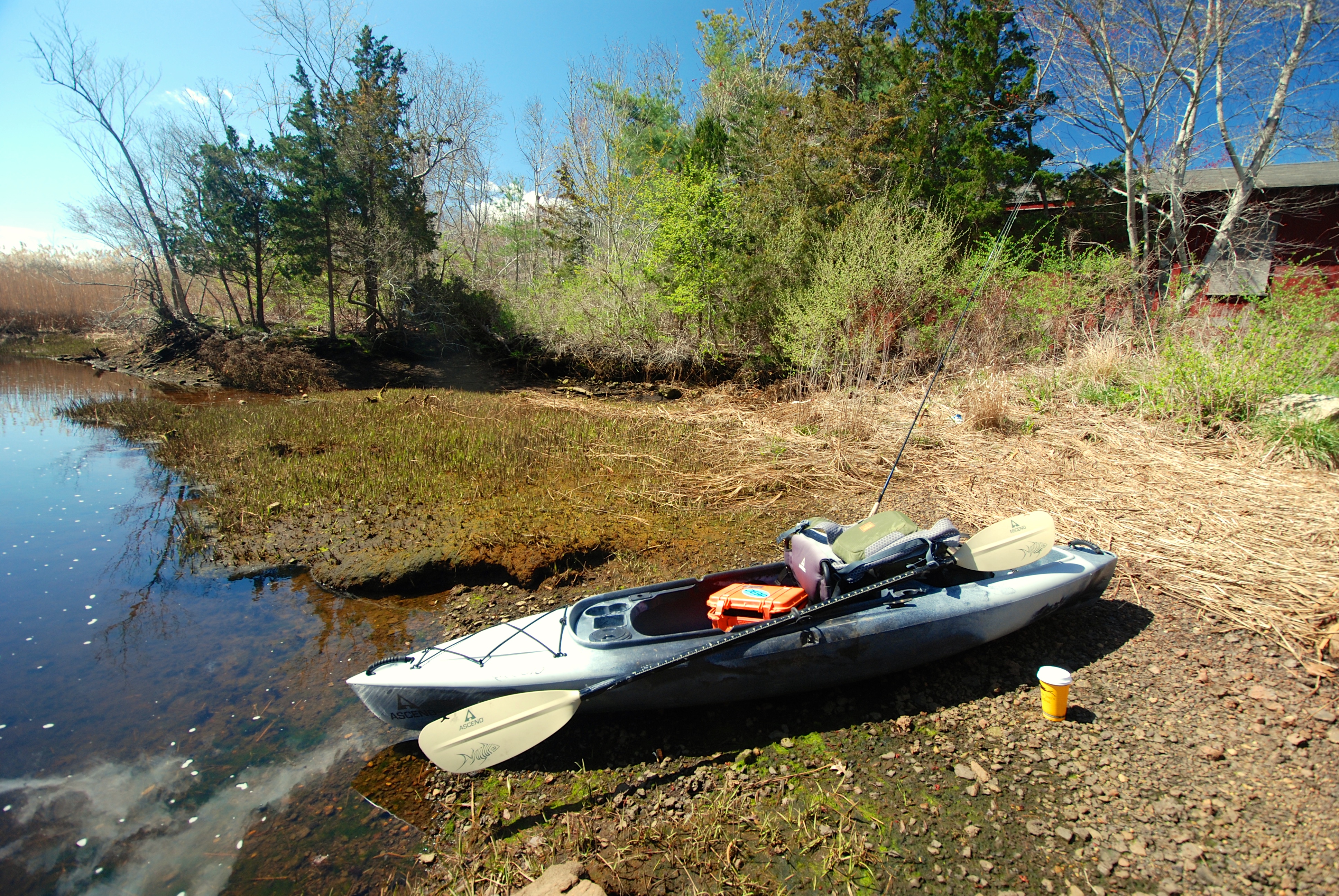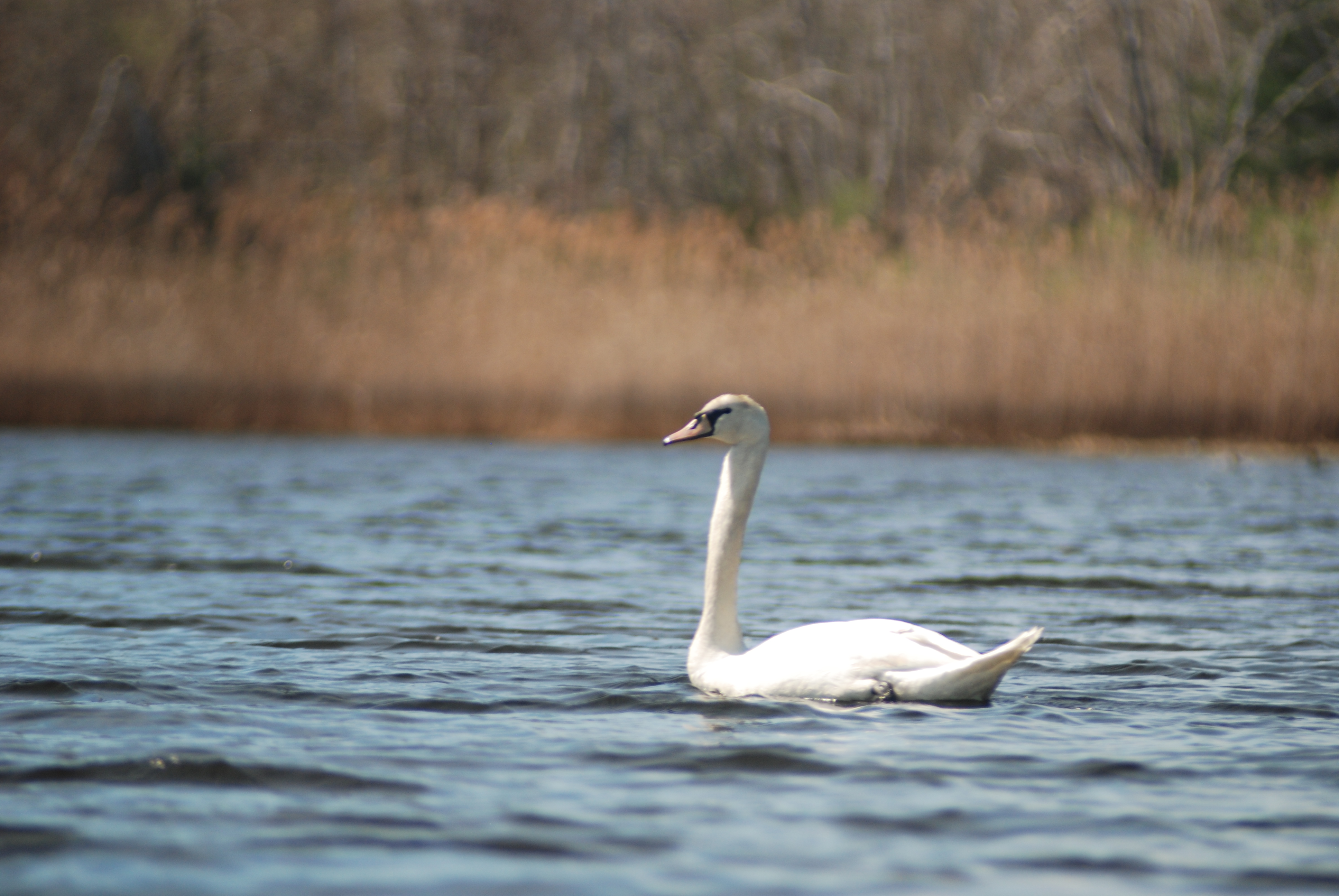


I must have some herring in my blood, because every spring I get the urge to kayak upstream along a local coastal river, from the ocean to its headwaters. I’m sure it’s simply a good excuse to get on the water after a long winter, but part of the process feels very instinctual.
This April, I chose the Agawam River, which flows through the town of Wareham in southeastern Massachusetts, as the site of my annual migration. Some 11 miles long, the Agawam is considered a tributary of the Wareham River, which flows into the northwest corner of Buzzards Bay. Both rivers host herring runs. In the case of the Agawam, the herring arrive in late March and early April, and travel some three miles upstream to a run, or fish ladder, that provides passage to their spawning grounds in Mill Pond and Glenn Charlie Pond.

My launch spot was the public kayak and cartop-boat put-in behind the old Tremont Nail Factory, off Elm Street and just below the Wareham herring run at the southern end of Parker Mills Pond. (Fun fact: the nail factory was the former site of a cotton mill that was destroyed by British troops during the War of 1812.)
After sliding into my yak, I paddled south along the Wareham River, making a few casts with the fishing outfit I had brought along. Striped bass were my target, and they can be caught inside the river starting in April. Most of these “early fish” are small—under 20 inches—but larger bass arrive in May, waiting to intercept post-spawn herring that as they drop back to the ocean.
At this point of the season, however, the herring were still entering the river, and osprey were picking them off here and there on the shallow flats. Then, a surprise. As I paddled along the marsh bank at Mayflower Ridge, which marks the mouth of the Agawam, the tiny head of a diamondback terrapin broke the surface some 15 feet in front of me, then quickly disappeared. I stopped, and noticed the heads of three more turtles nearby.
Diamondbacks are the only estuarine turtle in North America, and are considered a threatened species in Massachusetts, which marks the northernmost edge of their range. They spend most of their lives in brackish water, the females venturing ashore in June to lay their eggs in loose, sandy soil. Apparently, the Agawam boasts a robust localized population of these normally rare and elusive turtles, as I continued to encounter them well upstream.
I continued paddling, eventually coming to a bend in the river where the incoming tide had created a miniature rip—always a good spot to find striped bass. Indeed, one cast later I connected with my first striper of the season, a fish of about 14 inches. I had found a mess of them, and landed four more on consecutive casts. None were bigger than 18 inches, but it felt good to be catching saltwater fish again.
While I was tempted to keep fishing, I felt compelled to keep paddling, so I left the bass behind and continued upriver. The river widened considerably, something to keep in mind when making a trip, as a stiff headwind can make for a strenuous trip. Obviously, it pays to monitor the weather forecast before heading out.
The birdlife along the way was abundant, and included loons, great blue herons, mallards, goldeneye, willet, greater yellowlegs, kingfishers, Canada geese, and the ubiquitous (and invasive) mute swans that have invaded the Wareham River. As mentioned, osprey were also much in evidence, and I paused in my travels to observe one sitting on its nest near the marsh bank.
After 30 minutes, I paddled below some powerlines festooned with cormorants, and soon came to the Rte. 28 bridge I had so often driven over. The east bank of the river at this point is part of Minot Forest, and would make a good place to rest, eat, and stretch one’s legs. I opted to press on, however, as I could now detect the odor of fresh water and a change in the aquatic vegetation beneath my kayak. The birdlife was also changing, and began to include swallows, cardinals and sparrows.
A half-mile further and I was getting very close to my goal, as the river flowed beneath a long, dark, and spooky overpass that I knew to be Rte. 6. Beyond this, the river narrowed considerably to a width of about eight feet, and I had to fight my way through tangles of downed trees and other obstructions. I was glad to be in a small and nimble kayak.
I continued to pick my way upstream until I found myself some 50 feet below the herring run, where a suspicious osprey eyed me from his prime perch above the stream. Unlike the determined herring that proceeded me, I could go no farther, and so I turned around and began my journey downriver.
I wondered if the herring shared my sense of satisfaction.
Agawam Paddling Tips
